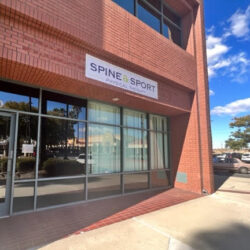The basics of pain management
- Chronic pain, or pain that lasts for more than three months, is a common condition affecting mobility and quality of life.
- Pain management often involves a combination of medication, physical therapy and lifestyle changes. Sometimes it also requires more advanced treatments such as surgery or care at pain clinics.
- Physical therapy is a leading treatment option because it tackles not only the symptoms of pain but also the root causes, such as muscle weakness or strain.
- Chronic pain is highly individualized, as are treatment plans for it and the patient’s progress and relief.
Move forward, faster, fearlessly
What is pain management?
According to the Centers for Disease Control and Prevention, about 1 in 5 adults in the United States suffer from chronic pain (pain that lasts longer than three months). This can severely affect their mobility, quality of life and ability to work. While some may find relief from rest and over-the-counter medications, this may not be enough to relieve pain for others.
This is when seeking physical therapy can help. Our therapy team can perform thorough physical and health history examinations to find the source of the pain, injury or disability. The team then determines the proper, individualized course of treatment. Depending on the patient’s situation, additional care from a pain management doctor may be necessary and incorporated into a patient’s overall care plan.
Chronic pain comes in many forms, so an effective treatment plan is highly individualized and may include:
- Physical therapy.
- Occupational therapy.
- Medications and pain relievers.
- Injections.
- Nerve stimulation therapy.
- Surgery.
- Lifestyle changes.
Our treatment plans often involve a combination of options. Care is coordinated with other healthcare professionals overseeing the patient to ensure that not just the symptoms are managed but the underlying issue as well.
What to expect from physical therapy treatment
Physical therapy is a great starting place to manage pain. The goal of physical therapy pain management is to greatly reduce or minimize pain, maximize physical functioning that can help prevent further injuries, and improve the quality of life.
Physical therapists are experts at not only alleviating pain, but also treating the root causes. This can include tackling areas of weakness or stiffness that may be adding stress to the places that hurt.
Possible physical therapy for pain management
- Strength exercises.
- Stretching exercises.
- Aerobic training.
- Water therapy (aquatic therapy) or pool exercises.
- Other exercises with light loads or walking.
- Transcutaneous electrical nerve stimulation (TENS) therapy.
- A special physical therapy pain management program the patients will be able to follow at home.
Physical therapy for pain management will involve parts of the body that are already in pain or injured. Treatment can be challenging, but under the guidance of Spine & Sport’s trained specialists, it is safe and healing. Our therapists will guide patients along the way with expectations on how exercises should feel and how the individual will feel after a session. It is common to feel muscle soreness after therapy sessions, and that means the exercises are working. This soreness should only last about 48 hours.
Timeline of pain management progress
Inactivity leads to stiff muscles, decreased mobility and decreased strength – all of which can worsen chronic pain symptoms. Due to the nature of chronic pain, there is no definite timeline for treatment and relief. But working with a physical therapist can help manage the chronic pain symptoms while improving overall health.
Conditions & injuries pain management targets
Physical therapy pain management can provide relief from pain caused by chronic health conditions, injury and past surgeries. Pain management can target most conditions and areas of the body, including:
- Spine, including the back and neck.
- Chronic joint pain.
- Fibromyalgia.
- Traumatic injuries.
- Arthritis.
Risks of not pursuing chronic pain treatment
There are many benefits of treating chronic pain, and there are also consequences a patient can experience without pain management treatment. Not treating chronic pain correctly or at all can cause the development of more severe pain.
As the pain intensifies, the patient will also become more uncomfortable. On top of that, not pursuing chronic pain treatment can lead to the occurrence of other diseases or worse conditions that are more difficult to treat.
Get informed about physical therapy
Learn more about related physical therapy services to enhance progress and results.
-
Regaining movement, easing pain and improving quality of life – these are just a few
of the benefits of physical therapy. Learn how PT can help you.
Spine & Sport clinics offering pain management near me
All of our clinics in Southern & Northern California offer pain management physical therapy services.

 South San Diego County
South San Diego County Central San Diego County
Central San Diego County East San Diego County
East San Diego County North San Diego County
North San Diego County Orange County
Orange County Imperial County
Imperial County Coachella Valley
Coachella Valley Riverside County
Riverside County Ventura County
Ventura County Los Angeles County
Los Angeles County Northern California
Northern California